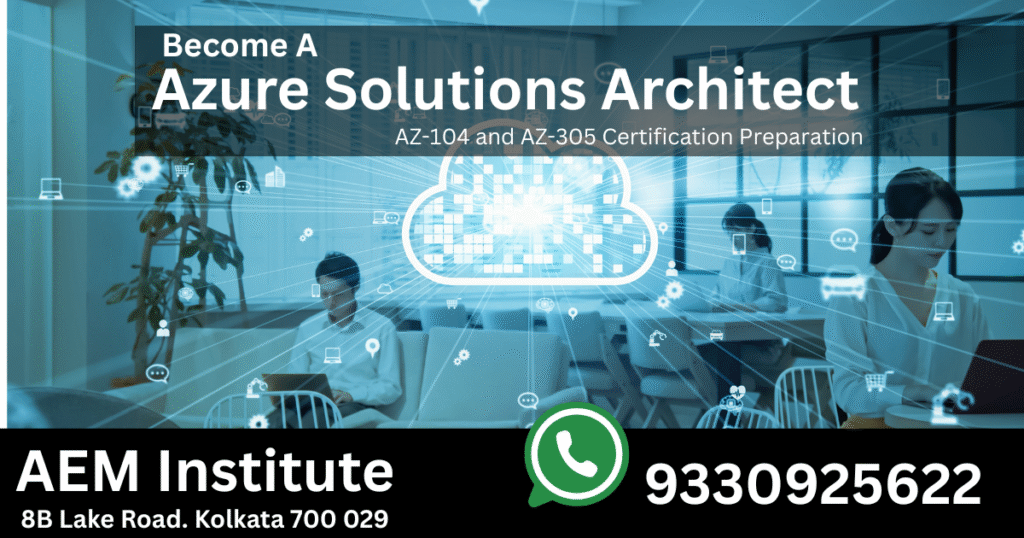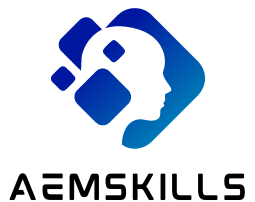The role of an AWS Solutions Architect requires a deep understanding of Amazon Web Services, cloud-native design, and the ability to translate complex business needs into scalable, secure, and cost-optimized solutions. For experienced candidates, interviews often test real-world architecture decision-making, trade-offs, and best practices rather than basic AWS definitions.
In this guide, we’ll cover 25 high-value AWS Solutions Architect interview questions with detailed, scenario-based answers—perfect for preparation at the professional level.
1. What is the AWS Well-Architected Framework, and how do you apply it in large-scale deployments?
The AWS Well-Architected Framework is a set of best practices to design and operate secure, high-performing, resilient, and efficient cloud workloads. It consists of six pillars: Operational Excellence, Security, Reliability, Performance Efficiency, Cost Optimization, and Sustainability. In large-scale deployments, applying this framework means conducting Well-Architected Reviews regularly, implementing automation for operational excellence (CloudFormation, CDK, Terraform), enforcing security baselines (IAM least privilege, encryption in transit and at rest), designing multi-AZ and multi-region failover for reliability, optimizing cost via Savings Plans and Spot Instances, and adopting serverless or containerized architectures for sustainability and performance.
2. Explain the difference between vertical scaling and horizontal scaling in AWS, and when to choose each.
Vertical scaling increases the capacity of a single instance (e.g., upgrading from an m5.large to an m5.4xlarge), while horizontal scaling adds more instances to distribute load (e.g., Auto Scaling Groups with ELB).
Choose vertical scaling for workloads that cannot be easily distributed, like monolithic databases, but it has a ceiling. Horizontal scaling is preferred for stateless web applications, microservices, and distributed data processing because it improves fault tolerance, scalability, and cost efficiency.
3. How would you design a multi-region active-active architecture in AWS?
A multi-region active-active design involves deploying resources in at least two AWS regions and directing traffic using Amazon Route 53 latency-based routing or Geo DNS. Data replication is achieved with Amazon DynamoDB Global Tables, Amazon S3 Cross-Region Replication, or Amazon Aurora Global Database. This architecture improves latency, resilience against regional outages, and compliance for geographic redundancy. Key considerations include eventual consistency in replicated data and handling conflict resolution.

4. What’s the difference between Amazon S3 Standard, S3 Intelligent-Tiering, and S3 Glacier Deep Archive?
| Feature | S3 Standard | S3 Intelligent-Tiering | S3 Glacier Deep Archive |
|---|---|---|---|
| Storage Cost (Lowest → Highest) | Highest | Moderate (varies by tier) | Lowest (cheapest for long-term storage) |
| Access Speed | Milliseconds (immediate access) | Milliseconds (for Frequent tier) | Hours (12–48 hrs retrieval time) |
| Use Case | Frequently accessed data (hot data) | Data with unpredictable access patterns | Rarely accessed, long-term archival (cold data) |
| Minimum Storage Duration | None | 30 days (short-term) | 180 days (early deletion fees apply) |
| Retrieval Fees | None (included in storage cost) | None for Frequent tier, fees for Archive tiers | Higher retrieval costs (per GB requested) |
| Auto-Tiering | No (fixed storage class) | Yes (moves between Frequent, Infrequent, Archive tiers) | No (fixed archival class) |
| Durability & Availability | 99.999999999% (11 9’s) durability | Same as Standard (high durability) | Same as Standard (high durability) |
| Best For | Active workloads (e.g., websites, apps) | Mixed-access data (e.g., analytics, backups) | Compliance archives, regulatory data |
As an architect, Intelligent-Tiering is excellent for unpredictable access patterns, while Glacier Deep Archive is ideal for long-term compliance data storage.
5. How do you secure data in transit and at rest in AWS?
- At Rest: Use AWS KMS for encryption, enable default encryption for S3, RDS, and EBS volumes, and manage keys with granular IAM policies.
- In Transit: Enforce HTTPS (TLS 1.2+), use AWS Certificate Manager for SSL certificates, and configure signed URLs or signed cookies for secure distribution via CloudFront.
Additionally, integrate AWS Secrets Manager for credentials and adopt a zero-trust networking approach with private subnets and security groups.
6. How would you design for high availability and disaster recovery in AWS?
Use Multi-AZ deployments for databases, Auto Scaling Groups for application servers, and Elastic Load Balancers for fault-tolerant traffic distribution. For disaster recovery, strategies range from Backup & Restore (low cost, slow recovery) to Pilot Light and Warm Standby, up to Multi-Site Active-Active (fastest recovery). The choice depends on RPO/RTO requirements. Implement periodic failover testing to ensure readiness.
7. Explain the difference between Amazon RDS, Aurora, and DynamoDB in architecture design.
- Amazon RDS: Managed relational databases (MySQL, PostgreSQL, SQL Server, etc.) for traditional applications needing strong ACID compliance.
- Amazon Aurora: High-performance, MySQL/PostgreSQL-compatible managed DB with distributed storage and faster replication.
- DynamoDB: Fully managed NoSQL key-value store for ultra-low-latency applications and massive scale.
Architects choose based on transaction type, query complexity, latency needs, and scaling model.
8. What are the trade-offs between using Lambda and EC2 for compute workloads?
- AWS Lambda: Serverless, event-driven, scales automatically, pay-per-use, but has cold starts and 15-minute execution limit.
- Amazon EC2: Full control over environment, can run long-lived workloads, but requires manual scaling and management.
Architects often use Lambda for microservices, lightweight APIs, and automation tasks, while EC2 is reserved for legacy apps, stateful workloads, and complex runtime dependencies.
9. How would you design a secure multi-account AWS architecture?
Adopt AWS Organizations with Service Control Policies (SCPs) for central governance. Use separate accounts for prod, staging, dev, and shared services. Implement centralized logging with AWS CloudTrail and AWS Config in a security account, and route all network traffic through a centralized Transit Gateway or VPC peering with firewall appliances. Enforce MFA, IAM role assumption, and AWS SSO for secure access.
10. Explain VPC peering vs. Transit Gateway.
- VPC Peering: Direct connection between two VPCs; simple but not scalable for many VPCs. No transitive routing.
- Transit Gateway: Hub-and-spoke model for connecting thousands of VPCs and on-premises networks; supports transitive routing and centralized management.
In large enterprises, Transit Gateway is preferred for its scalability and simplified routing.
11. How do you implement hybrid connectivity between AWS and on-premises?
Options include:
- AWS Direct Connect: Dedicated private network link for low-latency, high-bandwidth needs.
- Site-to-Site VPN: IPSec tunnel over the internet for quick setup and backup.
- Hybrid DNS with Route 53 Resolver for name resolution.
Architects often combine Direct Connect with VPN for redundancy.
12. What is the difference between Security Groups and Network ACLs?
- Security Groups: Stateful, instance-level firewalls; automatically allow return traffic.
- NACLs: Stateless, subnet-level controls; require explicit inbound and outbound rules.
Security Groups are used for fine-grained control per workload, while NACLs act as an additional layer of subnet-level protection.
| Feature | Security Groups (SG) | Network ACLs (NACL) |
|---|---|---|
| Operates at | Instance level (applies to ENIs) | Subnet level (applies to all instances in subnet) |
| Stateful/Stateless | Stateful (Return traffic is automatically allowed) | Stateless (Return traffic must be explicitly allowed) |
| Rule Evaluation | All rules evaluated before allowing traffic | Rules evaluated in order (lowest to highest rule number) |
| Default Behavior | Deny all, allow only explicitly specified rules | Allow all (default NACL allows all inbound/outbound) |
| Rule Types | Only allow rules (no deny rules) | Allow and deny rules |
| Rule Granularity | Supports referencing other SGs (IP or SG ID) | Only IP-based rules (no SG references) |
| Order of Processing | Applied after NACL (if traffic passes NACL, SG is checked) | Applied before SG (first layer of filtering) |
| Association | Attached to an instance (ENI) | Attached to a subnet |
| Modification Impact | Changes take effect immediately | Changes may take a few seconds to apply |
13. How do you optimize AWS costs without compromising performance?
Strategies include rightsizing instances, using Reserved Instances or Savings Plans, implementing auto scaling, leveraging Spot Instances for non-critical workloads, and using S3 lifecycle policies. Monitoring with AWS Cost Explorer, CloudWatch, and Trusted Advisor ensures proactive cost management.
14. How do you manage secrets and sensitive data in AWS?
Use AWS Secrets Manager or SSM Parameter Store for storing and rotating API keys, DB credentials, and tokens. Enforce encryption with AWS KMS and IAM policies. Avoid hardcoding credentials in code, and rotate keys regularly.
15. How would you design for global content delivery and low latency?
To design a system for global content delivery with low latency, you need a multi-layered approach that leverages CDNs, edge computing, caching, and intelligent routing. Start by using a CDN like Amazon CloudFront, which caches static and dynamic content at edge locations worldwide, ensuring users receive data from the nearest server. For dynamic content and APIs, AWS Global Accelerator improves performance by routing traffic through AWS’s private backbone instead of the public internet. To further optimize responses, use Lambda@Edge to run serverless functions at CDN locations, enabling real-time modifications like A/B testing or authentication checks. Implement smart caching strategies with proper Cache-Control headers and versioned assets to reduce origin server load. Optimize data transfer by enabling Brotli/Gzip compression and using modern protocols like HTTP/3 (QUIC) for faster connections. For databases, deploy globally distributed services like Aurora Global DB or DynamoDB Global Tables to minimize read latency across regions. Finally, continuously monitor performance with tools like CloudWatch and Real User Monitoring (RUM) to identify and resolve bottlenecks. Together, these strategies ensure fast, reliable content delivery to users worldwide while maintaining scalability and cost efficiency.
16. What are AWS Landing Zones and why are they important?
An AWS Landing Zone is a pre-configured, secure, and scalable multi-account environment that follows AWS best practices for governance, security, and compliance. It serves as a foundational setup for organizations migrating to AWS, ensuring a well-architected starting point that aligns with the AWS Cloud Adoption Framework (CAF).
- Security & Compliance
- Enforces guardrails (e.g., AWS Control Tower, SCPs) to prevent misconfigurations.
- Implements identity & access management (IAM) best practices (e.g., AWS Organizations, SSO).
- Ensures encryption, logging, and monitoring (AWS Config, CloudTrail, GuardDuty) by default.
- Multi-Account Structure
- Separates workloads into isolated accounts (e.g., production, development, logging) to minimize blast radius.
- Uses AWS Organizations for centralized billing and policy management.
- Automated Governance
- AWS Control Tower automates Landing Zone setup with pre-approved blueprints.
- Service Control Policies (SCPs) restrict risky actions (e.g., blocking public S3 buckets).
- Scalability & Standardization
- Provides a repeatable framework for onboarding new accounts/applications.
- Integrates with AWS Marketplace solutions (e.g., third-party security tools).
- Cost Optimization
- Centralized cost tracking via AWS Cost Explorer and budgets.
- Prevents shadow IT with controlled resource provisioning.
Key Components of an AWS Landing Zone
- AWS Control Tower (Automated setup & governance)
- AWS Organizations (Multi-account hierarchy)
- AWS IAM Identity Center (Centralized access)
- AWS Config & CloudTrail (Compliance tracking)
- VPC & Network Architecture (Hub-and-spoke, Transit Gateway)
- Logging & Monitoring (Centralized S3/CloudWatch logs)
17. How do you handle large-scale data migration to AWS?
For large-scale data migration to AWS, start by assessing data volume, type, and access patterns. Use AWS Snow Family (Snowball, Snowmobile) for offline petabyte-scale transfers or AWS DataSync for automated, high-speed network transfers. For databases, AWS DMS enables near-zero-downtime replication. Optimize performance via Direct Connect for dedicated bandwidth, S3 Transfer Acceleration for faster uploads, and parallelized transfers. Ensure security with KMS encryption and TLS, then validate integrity via checksums. Migrate incrementally—non-critical data first—before cutting over DNS via Route 53. Post-migration, monitor with CloudWatch and refine costs with Trusted Advisor. This structured approach ensures fast, secure, and cost-efficient large-scale migrations
18. How do you implement event-driven architecture in AWS?
Use Amazon EventBridge or SNS for event publishing, SQS for decouTo implement an event-driven architecture (EDA) in AWS, use services like Amazon EventBridge, SNS, SQS, and Lambda for decoupled, scalable workflows.
- Event Producers (e.g., API Gateway, DynamoDB Streams, IoT Core) publish events to EventBridge (a serverless event bus) or SNS (pub/sub messaging).
- Event Routing: EventBridge routes events using rules, while SNS fans out to multiple subscribers like SQS queues (for async processing) or Lambda (serverless compute).
- Processing: Lambda functions process events (e.g., transform data, trigger workflows), while Step Functions orchestrate complex workflows.
- Persistence: Store events in S3 or DynamoDB for auditing/replay.
- Monitoring: Use CloudWatch Logs and X-Ray for tracing.
Example: A file upload to S3 triggers a Lambda function via EventBridge, which processes the file and notifies users via SNS. This approach ensures scalability, loose coupling, and real-time responsiveness.pling, and AWS Lambda or Fargate for event processing. Ensure idempotency and retry policies to handle failures.
19. What’s the difference between ECS and EKS, and when to choose each?
Key Differences
| Feature | ECS | EKS |
|---|---|---|
| Orchestration | AWS-native (proprietary) | Kubernetes (open-standard) |
| Complexity | Simpler, integrated with AWS | More complex (requires K8s expertise) |
| Scaling | Auto Scaling with AWS metrics | K8s Horizontal Pod Autoscaler (HPA) |
| Networking | AWS VPC-native | Supports K8s CNI (e.g., Calico) |
| Tooling | AWS CLI/Console | kubectl, Helm, K8s ecosystem |
| Multi-Cloud/On-Prem | AWS-only | Portable (any K8s-compatible env) |
When to Choose ECS
- You prefer AWS-native simplicity and tight integration with services like ALB, RDS, etc.
- Your team lacks Kubernetes expertise.
- You need faster deployments with less overhead.
When to Choose EKS
- You require Kubernetes features (e.g., custom controllers, multi-cloud portability).
- Your team has K8s expertise or existing K8s deployments.
- You need advanced scaling, networking, or security policies via K8s tools.
20. How do you ensure compliance and auditing in AWS environments?
To ensure compliance and auditing in AWS environments, leverage a combination of native tools and best practices. Start by enabling AWS CloudTrail to log all API activity across accounts, providing an audit trail for security analysis. Use AWS Config to assess resource configurations against compliance rules (e.g., HIPAA, PCI-DSS) and detect deviations. Implement AWS Organizations SCPs (Service Control Policies) to enforce guardrails, such as restricting non-compliant regions or services. For continuous monitoring, deploy AWS Security Hub to aggregate findings from GuardDuty (threat detection), Inspector (vulnerability scanning), and third-party tools. Encrypt sensitive data with AWS KMS and enforce least-privilege access via IAM policies and AWS IAM Access Analyzer. Automate remediation with AWS Lambda or Systems Manager Automation for policy violations. For reporting, use AWS Audit Manager to generate evidence-ready compliance reports. Regularly review CloudWatch Logs and VPC Flow Logs for anomalies. Finally, adopt a multi-account strategy with AWS Control Tower to centralize governance. This layered approach ensures continuous compliance while streamlining audits.
21. How do you design a real-time analytics pipeline in AWS?
To design a real-time analytics pipeline in AWS, start with high-speed data ingestion using services like Amazon Kinesis Data Streams or Managed Streaming for Apache Kafka (MSK) to handle streaming data from sources like IoT devices or clickstreams. For lightweight processing, use AWS Lambda to transform or filter data, while Kinesis Data Analytics (with Flink or SQL) handles complex aggregations like rolling averages or anomaly detection. Store processed data in Amazon OpenSearch for real-time dashboards, Timestream for time-series metrics, or DynamoDB for low-latency access, while archiving raw data in S3 for historical analysis with Athena. Visualize insights with QuickSight or Grafana, and trigger alerts via CloudWatch Alarms or SNS. For governance, use EventBridge to orchestrate workflows and AWS Glue Data Catalog for metadata management. This serverless-first approach ensures scalability, sub-second latency, and built-in fault tolerance, making it ideal for use cases like fraud detection, live operational metrics, or personalized recommendations. For IoT workloads, AWS IoT Core can directly feed into the pipeline, while EMR (with Spark Structured Streaming) supports advanced stateful processing. The result is an end-to-end pipeline that balances speed, cost, and flexibility.
22. What are some best practices for IAM policy design in AWS?
Follow the principle of least privilege, use IAM roles over long-term credentials, apply managed policies for consistency, and enforce MFA. Use permission boundaries and service control policies in multi-account setups.
23. How do you architect for high-performance computing (HPC) in AWS?
Architecting a high-performance computing (HPC) solution in AWS requires leveraging scalable, low-latency infrastructure tailored to compute-intensive workloads like simulations, genomics, or financial modeling. Start by selecting EC2 instances optimized for HPC, such as C5n (compute-intensive), P4/P3 (GPU-based), or HPC6a (AMD-powered) instances, paired with Elastic Fabric Adapter (EFA) for ultra-low-latency networking (critical for MPI workloads). Use AWS ParallelCluster to deploy and manage auto-scaling HPC clusters, integrating with FSx for Lustre for high-throughput, low-latency shared storage, or S3 with DataSync for large-scale data ingestion. For workflow orchestration, leverage AWS Batch or Step Functions to coordinate distributed jobs, while CloudWatch and X-Ray monitor performance bottlenecks. Optimize costs with Spot Instances for fault-tolerant workloads and Savings Plans for sustained usage. For domain-specific needs, integrate AWS services like RoboMaker (robotics) or HealthOmics (genomics). This architecture ensures elastic scalability, petascale performance, and cost efficiency, whether for burstable or long-running HPC workloads.
24. What’s the role of CloudFormation and CDK in infrastructure management?
- CloudFormation: Declarative IaC tool for provisioning AWS resources.
- CDK: Allows defining AWS resources in programming languages like Python, TypeScript, and Java.
They ensure repeatability, version control, and automation in infrastructure deployment.
25. How would you integrate AI/ML workloads into AWS architecture?
Integrating AI/ML workloads into AWS architecture requires a scalable, end-to-end pipeline that covers data ingestion, processing, training, and inference. Start by collecting and storing raw data in Amazon S3 or Lake Formation for centralized governance. Preprocess the data using AWS Glue for ETL or SageMaker Data Wrangler for feature engineering. For model training, leverage Amazon SageMaker to build, train, and tune ML models with managed Jupyter notebooks, distributed training (e.g., using SageMaker Training Compiler for optimized performance), and automatic hyperparameter tuning. Deploy trained models as real-time endpoints with SageMaker Inference or serverless batch transforms, or optimize costs using SageMaker Multi-Model Endpoints (MME) for shared hosting. For low-latency edge inference, use SageMaker Edge Manager or deploy models to AWS IoT Greengrass. Integrate ML outputs into applications via API Gateway or Lambda, and monitor performance with CloudWatch Metrics and SageMaker Model Monitor for drift detection. For specialized use cases, use purpose-built services like Rekognition (CV), Lex (NLP), or Forecast (time-series). This approach ensures scalability, MLOps automation (via SageMaker Pipelines), and cost efficiency, while maintaining security with IAM roles, KMS encryption, and VPC isolation.

Final Thoughts
Preparing for an AWS Solutions Architect interview as an experienced professional requires more than memorizing AWS service names—it’s about understanding trade-offs, applying best practices, and aligning architecture with business goals.
These 25 interview questions cover the most critical areas, from scalability and security to cost optimization and hybrid architectures, helping you demonstrate deep technical expertise.

Cybersecurity Architect | Cloud-Native Defense | AI/ML Security | DevSecOps
With over 23 years of experience in cybersecurity, I specialize in building resilient, zero-trust digital ecosystems across multi-cloud (AWS, Azure, GCP) and Kubernetes (EKS, AKS, GKE) environments. My journey began in network security—firewalls, IDS/IPS—and expanded into Linux/Windows hardening, IAM, and DevSecOps automation using Terraform, GitLab CI/CD, and policy-as-code tools like OPA and Checkov.
Today, my focus is on securing AI/ML adoption through MLSecOps, protecting models from adversarial attacks with tools like Robust Intelligence and Microsoft Counterfit. I integrate AISecOps for threat detection (Darktrace, Microsoft Security Copilot) and automate incident response with forensics-driven workflows (Elastic SIEM, TheHive).
Whether it’s hardening cloud-native stacks, embedding security into CI/CD pipelines, or safeguarding AI systems, I bridge the gap between security and innovation—ensuring defense scales with speed.
Let’s connect and discuss the future of secure, intelligent infrastructure.
